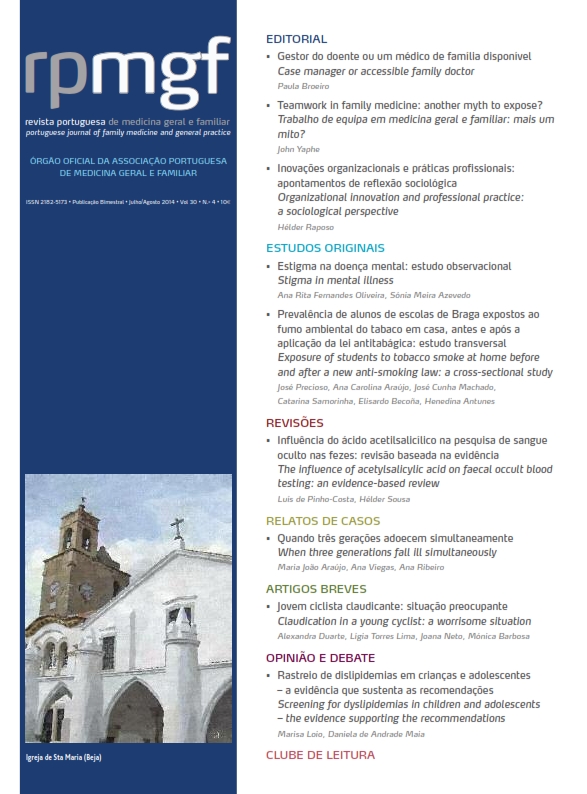Claudication in a young cyclist: a worrisome situation
DOI:
https://doi.org/10.32385/rpmgf.v30i4.11351Keywords:
Intermittent Claudication, Bicycling, Arterial Occlusive DiseaseAbstract
Introduction: Intermittent claudication is a familiar complaint in Primary Health Care and is associated with aging and atherosclerosis. However, in the young adult without risk factors, it is extremely rare. Case report: A 26 year-old professional cyclist presented with progressive worsening of intermittent claudication. The diagnosis was made six months after the onset of symptoms, when incapacitating claudication was already present. During this time he was seen by several doctors from different specialties and underwent various imaging studies, which did not demonstrate abnormalities. Iliac artery atherosclerotic stenosis was diagnosed, with recurrence after surgery and during medical treatment. This forced him to abandon his career at an early age. Comment: In young patients with complaints of pain or functional disability with exercise, even without risk factors for atherosclerotic disease, the possibility of arterial disease should be investigated. Iliac artery endofibrosis is under-diagnosed in our country. It is more common in high-level competitive athletes. This case is presented to alert and sensitize family doctors to a rare diagnosis that requires early diagnosis to prevent potentially serious complications.Downloads
Downloads
Published
Issue
Section
License
The authors will assign to the RPMGF the sole right to publish and distribute the content of the manuscript specified in this declaration via physical, electronic, broadcasting or any other medium that may come into existence. They also grant the RPMGF the right to use and exploit this manuscript, in particular by assigning, selling or licensing its content. This permission is permanent and takes effect from the moment the manuscript is submitted, has the maximum duration allowed by applicable Portuguese or international law and is of worldwide scope. The authors further declare that this assignment is made free of charge. If the RPMGF informs the authors that it is not going to publish their manuscript, the exclusive assignment of rights ceases forthwith.
The authors authorise the RPMGF (or any entity it may appoint) to act on their behalf when it believes that copyright may have been infringed.





